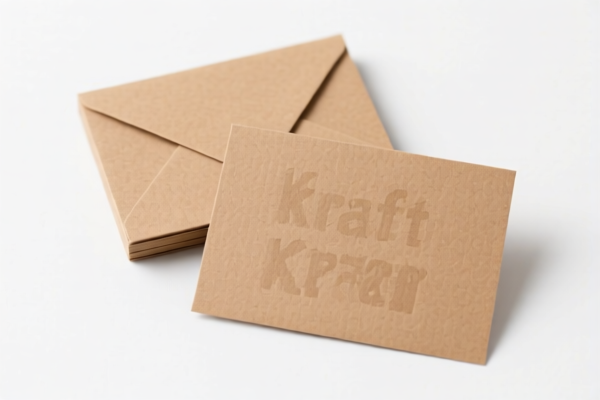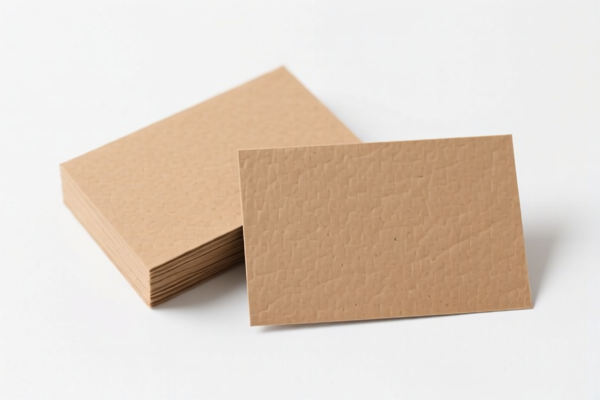| HS Code | Official Doc | Tariff Rate | Origin | Destination | Effective Date |
|---|---|---|---|---|---|
| 4804420020 | Doc | 55.0% | CN | US | 2025-05-12 |
| 4804490000 | Doc | 55.0% | CN | US | 2025-05-12 |
| 4802581000 | Doc | 55.0% | CN | US | 2025-05-12 |
| 4823901000 | Doc | 55.0% | CN | US | 2025-05-12 |
| 4823902000 | Doc | 55.0% | CN | US | 2025-05-12 |
| 3215905000 | Doc | 56.8% | CN | US | 2025-05-12 |
| 3215901000 | Doc | 58.1% | CN | US | 2025-05-12 |
| 4911998000 | Doc | 37.5% | CN | US | 2025-05-12 |
| 4911996000 | Doc | 37.5% | CN | US | 2025-05-12 |
| 9701290000 | Doc | 37.5% | CN | US | 2025-05-12 |
| 9701990000 | Doc | 37.5% | CN | US | 2025-05-12 |




Card Stock
Card stock is a paper stock that is thicker than standard printer paper. It is valued for its durability and is used in a wide variety of applications requiring a more substantial paper weight.
Material
Card stock is typically made from pulp fibers, similar to regular paper. However, it utilizes longer fibers and a more refined pulping process. This results in a denser, heavier sheet. It can be composed of various wood pulp types (virgin or recycled), and may include cotton fibers for higher quality stocks. Coatings can be applied to the surface for specific properties, such as gloss, matte finishes, or water resistance.
Purpose
The primary purpose of card stock is to provide a robust and aesthetically pleasing medium for applications where standard paper would be insufficient. Its strength makes it suitable for items needing to withstand handling, folding, or cutting.
Function
Card stock functions as a versatile substrate for:
- Structural Support: Provides rigidity in cards, boxes, and other three-dimensional creations.
- Printability: Accepts ink and toner well, allowing for high-quality printing of text and graphics.
- Visual Appeal: Available in a wide range of colors, textures, and finishes to enhance the visual presentation of a project.
- Durability: Resists tearing and bending better than standard paper, increasing the lifespan of the finished product.
Usage Scenarios
- Greeting Cards & Invitations: The most common application, providing a professional and durable card base.
- Business Cards: Offers a premium feel and increased durability compared to standard paper business cards.
- Postcards: Provides a sturdier base for mailing and handling.
- Scrapbooking & Paper Crafting: Used for creating embellishments, layers, and structural elements.
- Packaging: Suitable for small boxes, tags, and other packaging components.
- Flashcards & Index Cards: Offers durability for repeated use.
- Book Covers: Used for creating protective and visually appealing book covers.
Common Types
Card stock is categorized by weight (measured in pounds or grams per square meter) and finish.
- Cover Stock (65-110 lb / 176-300 gsm): The heaviest type, used for applications requiring significant rigidity, such as book covers and card bases.
- Cardstock (65-110 lb / 176-300 gsm): A versatile weight suitable for a wide range of projects.
- Text Weight (60-80 lb / 160-216 gsm): Lighter card stock, often used for invitations or tags.
- Smooth Card Stock: Offers a clean, professional look and is ideal for detailed printing.
- Textured Card Stock: Provides a tactile feel and visual interest, available in various patterns (linen, laid, felt, etc.).
- Metallic Card Stock: Features a shimmering finish for a luxurious appearance.
- Pearlized Card Stock: Offers a subtle sheen and iridescent effect.
- Colored Card Stock: Available in a vast spectrum of colors for diverse creative projects.
Card stock, based on the provided information, generally refers to a heavy-weight paper or paperboard used for various applications requiring durability, such as crafting, printing, and packaging. The classification depends on its composition, weight, and intended use.
Here are the relevant HS codes found within the provided reference material:
-
4804420020: This HS code covers uncoated kraft paper and paperboard in rolls or sheets, other than those under headings 4802 or 4803. Specifically, it applies to other kraft paper and paperboard weighing more than 150 g/m² but less than 225 g/m². It is further defined as bleached uniformly throughout the mass and of which more than 95 percent by weight of the total fiber content consists of wood fibers obtained by a chemical process, including folding carton stock.
- 48: Chapter 48 covers Paper or paperboard; articles of paper pulp, paper, paperboard, cellulose wadding or webs of cellulose fibers.
- 04: Heading 4804 specifically covers Uncoated kraft paper and paperboard.
- 42: Subheading 480442 further specifies other kraft paper and paperboard.
- 0020: This further defines the specific type of paper/paperboard covered.
- Tax Rate: The base tariff is 0.0%, with an additional tariff of 25.0%. After April 2, 2025, the additional tariff increases to 30.0%, resulting in a total tariff of 55.0%.
-
4804490000: This HS code also covers uncoated kraft paper and paperboard in rolls or sheets, other than those under headings 4802 or 4803. However, it applies to other kraft paper and paperboard weighing more than 150 g/m² but less than 225 g/m², but categorized as other (not specifically bleached as in 4804420020).
- 48: Chapter 48 covers Paper or paperboard; articles of paper pulp, paper, paperboard, cellulose wadding or webs of cellulose fibers.
- 04: Heading 4804 specifically covers Uncoated kraft paper and paperboard.
- 49: Subheading 480449 further specifies other kraft paper and paperboard.
- 0000: This further defines the specific type of paper/paperboard covered.
- Tax Rate: The base tariff is 0.0%, with an additional tariff of 25.0%. After April 2, 2025, the additional tariff increases to 30.0%, resulting in a total tariff of 55.0%.
-
4802581000: This HS code covers uncoated paper and paperboard of a kind used for writing, printing or other graphic purposes, and non perforated punch-cards and punch tape paper, in rolls or rectangular (including square) sheets. Specifically, it applies to other paper and paperboard, not containing fibers obtained by a mechanical or chemi-mechanical process or of which not more than 10 percent by weight of the total fiber content consists of such fibers, weighing more than 150 g/m², in strips or rolls of a width exceeding 15 cm or in rectangular (including square) sheets with one side exceeding 36 cm and the other side exceeding 15 cm in the unfolded state, categorized as writing and cover paper.
- 48: Chapter 48 covers Paper or paperboard; articles of paper pulp, paper, paperboard, cellulose wadding or webs of cellulose fibers.
- 02: Heading 4802 specifically covers Uncoated paper and paperboard.
- 58: Subheading 480258 further specifies other paper and paperboard.
- 1000: This further defines the specific type of paper/paperboard covered.
- Tax Rate: The base tariff is 0.0%, with an additional tariff of 25.0%. After April 2, 2025, the additional tariff increases to 30.0%, resulting in a total tariff of 55.0%.
It is important to determine the exact composition (kraft paper vs. other paper), weight, and fiber content of the card stock to select the most appropriate HS code.
Customer Reviews
No reviews yet.